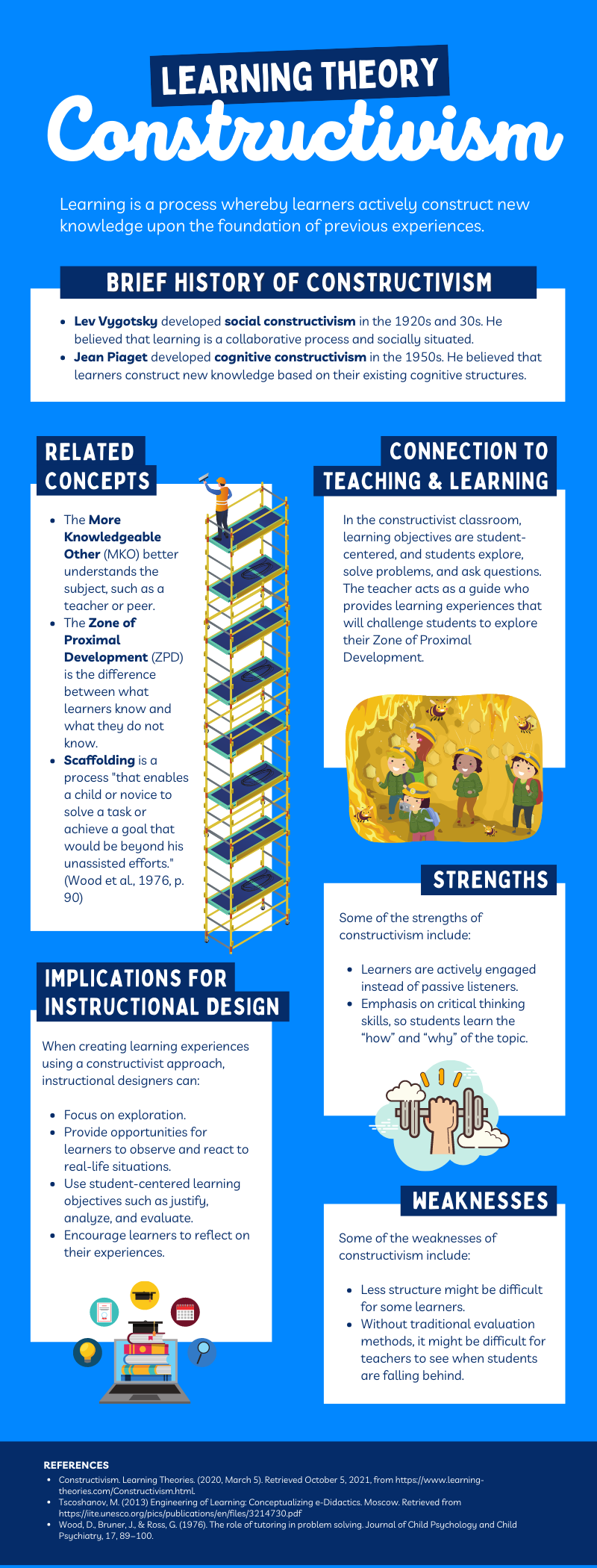
Brief History of Constructivism
- Lev Vygotsky developed social constructivism in the 1920s and 30s. He believed that learning is a collaborative process and socially situated.
- Jean Piaget developed cognitive constructivism in the 1950s. He believed that learners construct new knowledge based on their existing cognitive structures.
Related Concepts
- The More Knowledgeable Other (MKO) better understands the subject, such as a teacher or peer.
- The Zone of Proximal Development (ZPD) is the difference between what learners know and what they do not know.
- Scaffolding is a process “that enables a child or novice to solve a task or achieve a goal that would be beyond his unassisted efforts.” (Wood et al., 1976, p. 90)
Connection to Teaching and Learning
In the constructivist classroom, learning objectives are student-centered, and students explore, solve problems, and ask questions. The teacher acts as a guide who provides learning experiences that will challenge students to explore their Zone of Proximal Development.
Strengths
- Learners are actively engaged instead of passive listeners.
- Emphasis on critical thinking skills, so students learn the “how” and “why” of the topic.
Weaknesses
- Less structure might be difficult for some learners.
- Without traditional evaluation methods, it might be difficult for teachers to see when students are falling behind.
Implications for Instructional Design
When creating learning experiences using a constructivist approach, instructional designers can:
- Focus on exploration.
- Provide opportunities for learners to observe and react to real-life situations.
- Use student-centered learning objectives such as justify, analyze, and evaluate.
- Encourage learners to reflect on their experiences.
References
Constructivism. Learning Theories. (2020, March 5). Retrieved October 5, 2021, from https://www.learning-theories.com/Constructivism.html.
Tscoshanov, M. (2013) Engineering of Learning: Conceptualizing e-Didactics. Moscow. Retrieved from https://iite.unesco.org/pics/publications/en/files/3214730.pdf
Wood, D., Bruner, J., & Ross, G. (1976). The role of tutoring in problem solving. Journal of Child Psychology and Child Psychiatry, 17, 89−100.